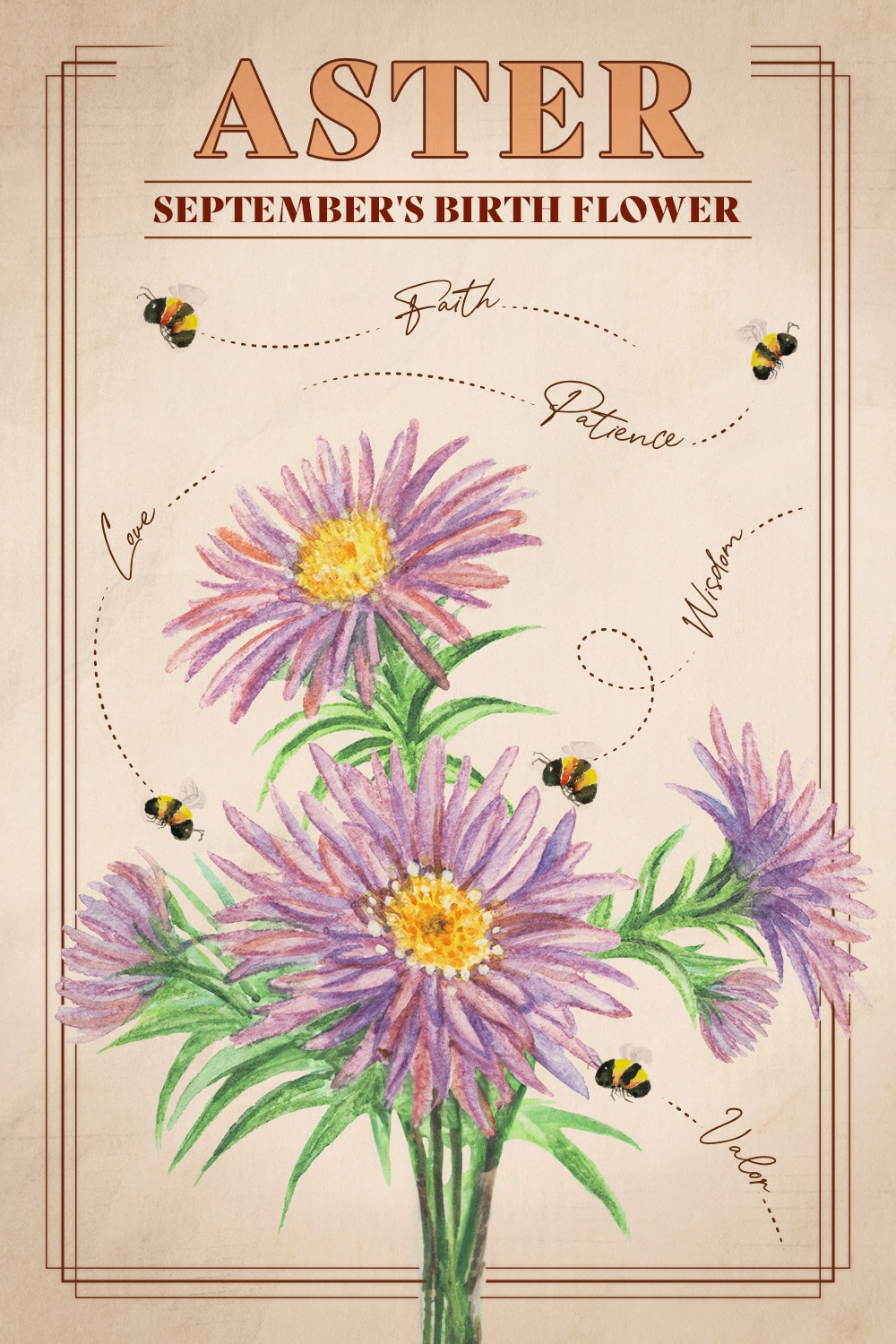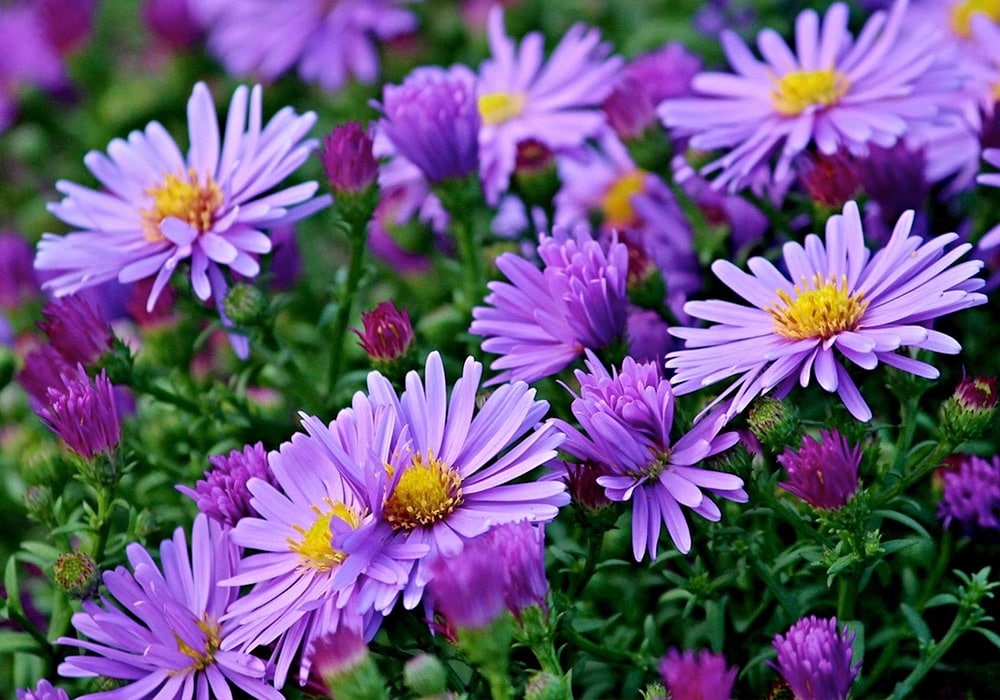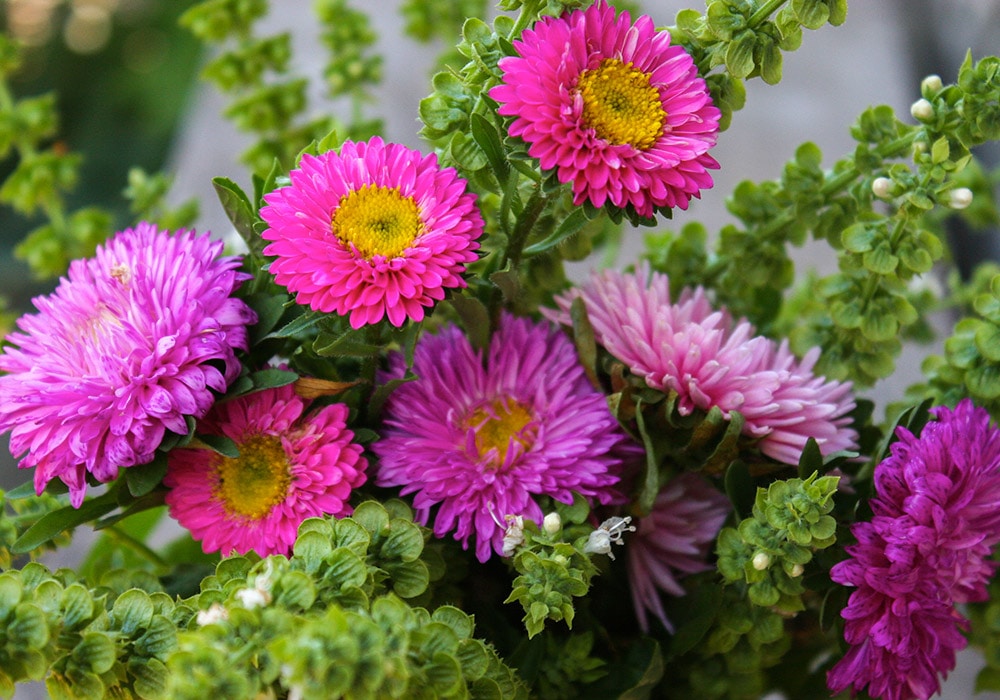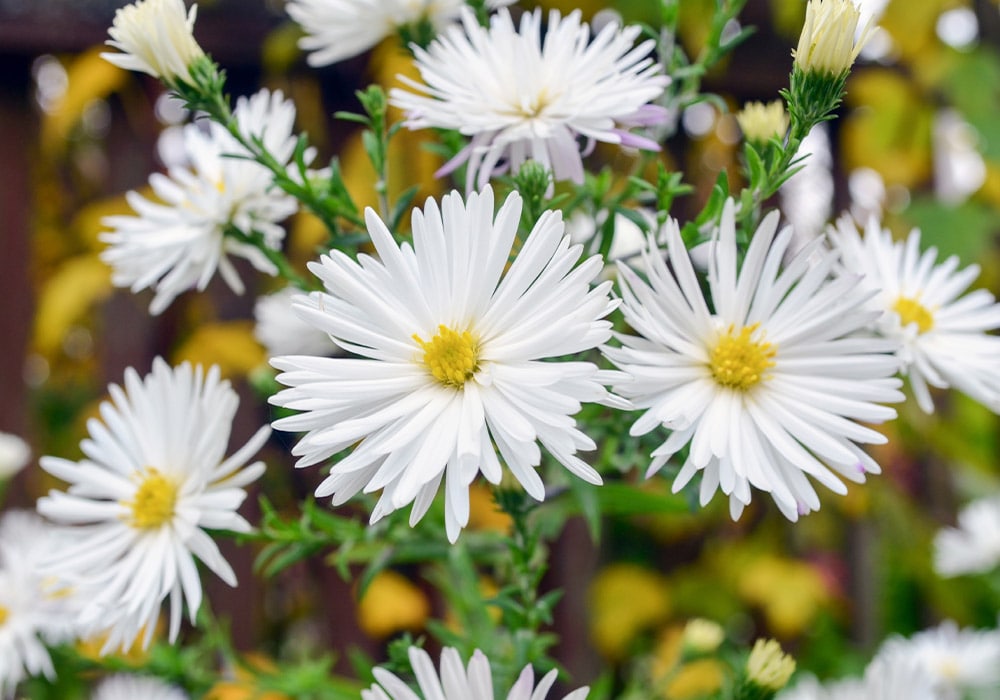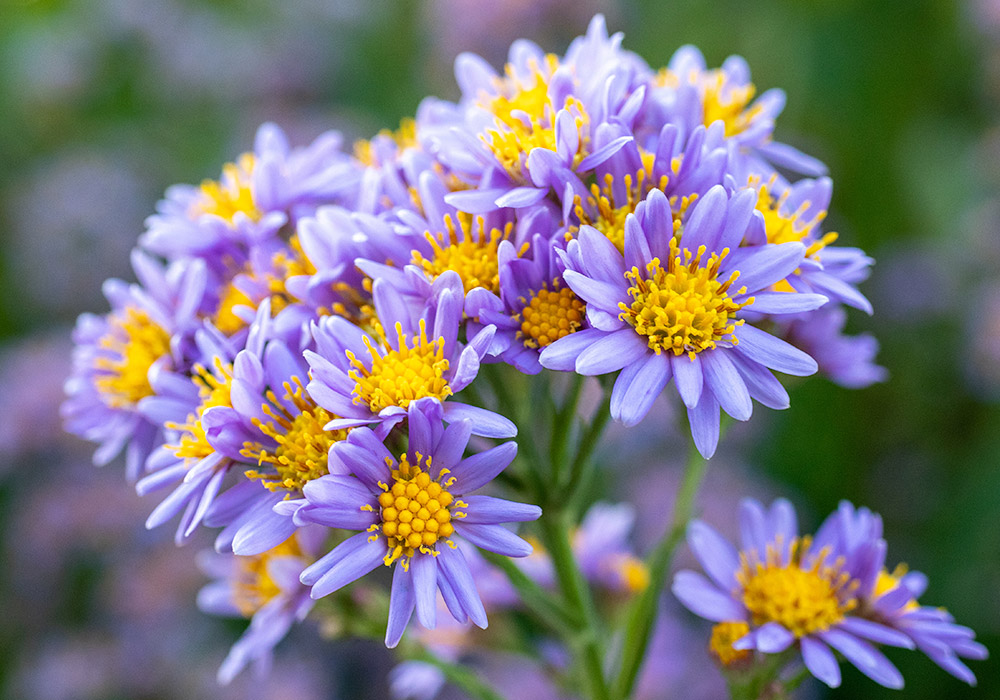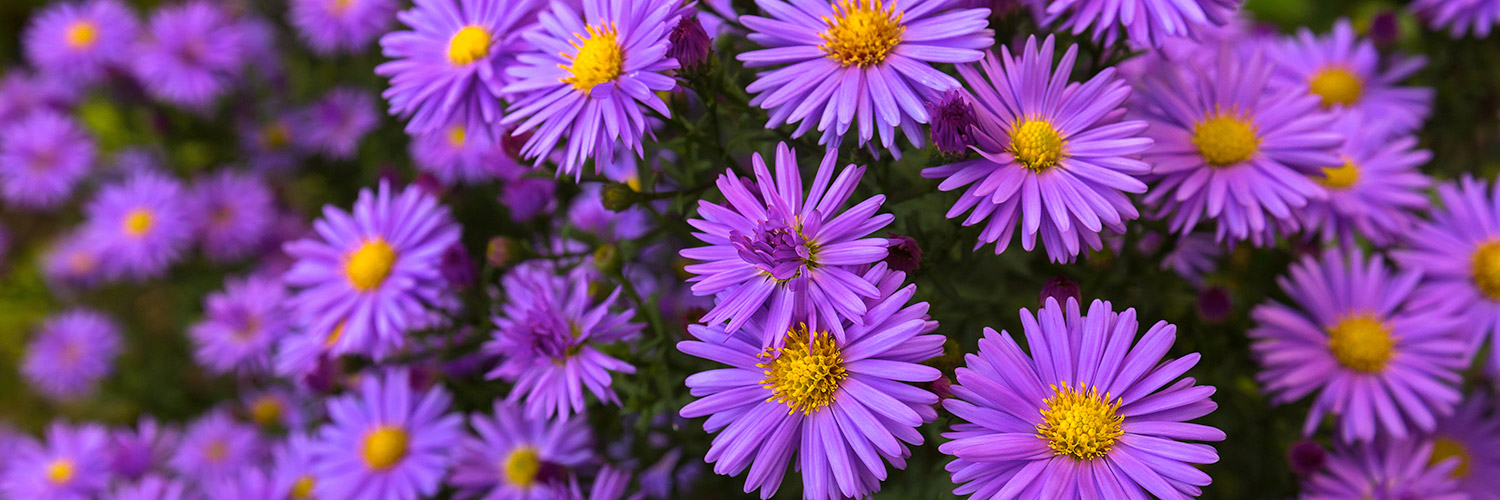
Asters are the quintessential embodiment of fall, when many other blooms have moved past their prime. These autumnal flowers bring a vibrant splash of color and texture to arrangements, making them a popular choice for florists and floral enthusiasts.
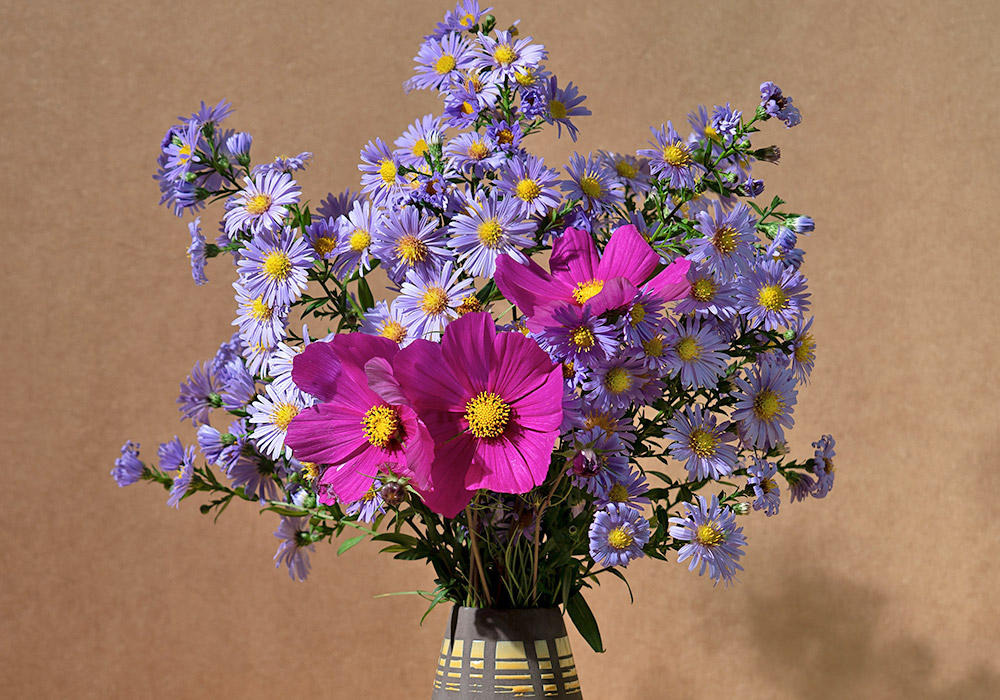
About the Aster
Asters are native to temperate regions across Europe, Asia, and North America. These hardy perennials thrive in full sunlight and well-draining soil, flourishing in the cooler temperatures of autumn. With a blooming season that spans from late summer to early fall, asters provide a final burst of color before winter sets in. Their star-shaped flowers are a delight in both gardens and bouquets, bringing warmth and brightness as the days grow shorter. Fresh-cut asters can last up to two weeks in a vase, provided they are kept in cool water and away from direct sunlight.
Characteristics of Aster
Asters are known for their star-like appearance, which is reflected in their name - "Aster", which is derived from the Greek word for star. These flowers have a daisy-like structure with a central disk surrounded by numerous slender petals. The blooms come in a variety of colors, including shades of purple, pink, blue, and white, often with a contrasting yellow center. Asters belong to the Asteraceae family, sharing this classification with sunflowers and daisies. Their slender stems and bushy foliage make them ideal for bouquets and arrangements, as well as garden borders and wildflower meadows, adding natural elegance to any landscape.
Aster Symbolism
Asters carry rich symbolism, often representing love, faith, wisdom, patience, and valor. Their varied colors add layers of meaning:
Popular Aster Varieties
With numerous species and hybrids, asters offer a wide range of choices for gardeners and florists. Here are ten popular varieties:
- New England Aster (Symphyotrichum novae-angliae)
- New York Aster (Symphyotrichum novi-belgii)
- Wood's Purple Aster (Symphyotrichum dumosum 'Wood's Purple')
- Alma Potschke Aster (Symphyotrichum novae-angliae 'Alma Potschke')
- Blue Wood Aster (Symphyotrichum cordifolium)
- Calico Aster (Symphyotrichum lateriflorum)
- Heath Aster (Symphyotrichum ericoides)
- Sky Blue Aster (Symphyotrichum oolentangiense)
- Silky Aster (Symphyotrichum sericeum)
- Tatarian Aster (Aster tataricus)
Aster Name Meaning
The name "aster" comes from the Greek word for star, a nod to the flower's star-shaped blooms. This stellar connection has also earned asters the nickname "starworts," highlighting their twinkling beauty in the garden.
Fun Facts About the Aster
- Asters are often referred to as "Michaelmas daisies" because they bloom around the feast of St. Michael on September 29.
- Asters are the official birth flowers for the month of September.
- In ancient times, asters were believed to drive away snakes and protect against evil spirits.
- Each aster flower can have up to 300 florets, creating a full, lush appearance.
- Historically, asters were used in herbal medicine to treat headaches and respiratory issues.
- In Greek mythology, asters represented the goddess, Venus. They were also said to come from the tears of the goddess Astraea, who cried because there weren't enough stars in the sky. Her tears became asters that covered the bleak landscape in color.
Aster Occasions
Asters are a favorite choice for autumn weddings, thanks to their vibrant hues and symbolic meanings. They also make thoughtful gifts for birthdays (especially September birthdays), anniversaries, and other special occasions during the fall season. Their resilience and beauty also make them a wonderful addition to your home, bringing a touch of autumnal elegance indoors.
